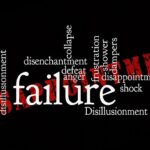
How much? Tough questions about generational handover
08/04/2025
What to learn from failure?
09/05/2025Conflict is always an opportunity; put like that, it may sound more like a joke, even a naive one, than a responsible or sensible statement. Yet, if we know how to look at it with competent and skilful eyes, such inevitable instance reveals great opportunities. Let us see why and what can be done to seize them.
What is a conflict
A conflict, as we understand it here, is a conflict between the objectives, priorities or needs of two or more subjects; this applies to both individual and collective subjects. It does not change whether it is a disagreement between husband and wife, between residents in a condominium or between nations or peoples. I said as we understand it here, but if we think about it, this is also how it is in our everyday experience.
I try to keep theory to a minimum, for more on this you can refer to my book on the CASE® Method, but something will have to be explained.
The human being is a social animal and as such has innate dynamics. One of these is that, in a healthy state, he tends to satisfy the conditions that ensure his own existence and that of his community. For this to happen, the needs of the individual and the collective must be met. In a healthy society, the needs of individuals are met and this creates peace and harmony in the community. This balance, even in the best society, is dynamic and always changing. This is why it will happen that individuals, or groups of them, may at certain times perceive that one or more of their needs are not being met. At such moments, a conflict between individuals or groups may be triggered to re-establish the balance.
The healthy approach to conflict
In a culture in which conflict is always an opportunity, such a situation will lead to the search for mutually satisfactory ways of restoring the state of need satisfaction. These are the so-called win-win solutions, i.e. those in which both (or more) parties to a conflict emerge from it with satisfaction.
This approach requires refined communication tools and a lot of creativity. It also requires a lot of respect, because the other side of the conflict must first be legitimised to exist and to present its demands. Already here you can imagine how difficult it is to set up conflict transformation: how often at the onset of a conflict one immediately starts denigrating the other side, delegitimising it so as to deny that it has the right to voice a grievance!
Beware: legitimising does not mean approving what it asks for; there is often confusion about this. But if you believe that conflict is always an opportunity, to seize it you must start by legitimising the other person and his right to represent his demands. Then you can start the transformation process and begin to move towards the opportunity.
Why transformation
You will often have heard people talk about conflict management, but you will always hear me talk about conflict transformation. To manage a conflict, in my view, means to perpetuate it, keeping the effects in check,
To transform a conflict means to turn it into an opportunity to create greater wellbeing and prosperity in the community to which the parties to the conflict belong; this is whether they are husband and wife or sovereign states and the international community. Win-win means that everyone wins, so they gain something.
Therefore, to transform, we need to move the dynamics of conflict from opposition, which is typical of our culture, to creativity and collaboration. If I legitimise my counterpart to be what it is, to exist, to have needs, I will be able to collaborate with it in the search for solutions. Together, we will transform the initial situation, in which we both (or more) perceived a lack, an uneasiness, into one in which we feel more satisfied. Wouldn’t we all like to live in a better situation than we do now?
A Method to succeed
Transforming a conflict situation can be very challenging. It is one thing to transform a small tension in the family, or between colleagues in the workplace; it is quite another to pacify two warring states. Although sometimes relationships between couples or between family members seem more entrenched than international ones…
In any case, and all jokes aside, effective conflict transformation requires skills and method. One needs to be able to read among the obvious phenomena of conflict what needs are at stake, the emotions, the openings and closures of the parties. One also has to be sure that the foundations are laid for real opportunities to emerge for improvement that are lasting and satisfying for all.
This is why I have created the CASE® Method, a simple process based on sound knowledge and research in the social sciences, anthropology and neuroscience. The process consists of 4 Phases, which proceed thanks to 9 Steps, resting on 9 Pillars. I have applied and taught this method on three continents and in multiple professional, personal and cultural contexts. It works!
The Four Phases
In the process, the first thing to do is to carefully reconnoitre the actual facts, with first-hand information. This, too, is not always easy. This is the COGNITIVE PHASE. Already here you will experience with some surprise how many of the causes of conflict lie in interpretations and misrepresentations of reality.
Next, it will be necessary to analyse what lies behind the conflict. We will do this in the ANALYTIC PHASE by looking for what in technical language are called Fundamentals and Essential Needs. The former are basically the demands that the parties make, explicitly or otherwise. The latter, on the other hand, represent the fears that the parties perceive with respect to their needs. These may be due to real or even imaginary threats, but must in any case be identified. It is by allaying these fears with concrete proposals that we can defuse conflict and seize opportunities.
Then comes the STRATEGIC PHASE. This is where creativity is expressed to the fullest, with the search for and proposal of solutions that can guarantee a win-win outcome. In this phase, the role of the external advisor is still very important to bring new, original points of view that are not influenced by past conflict dynamics.
Finally, we come to the EXECUTIVE PHASE, as in any self-respecting PDCA cycle, here too, in addition to putting into practice the solutions devised in the previous phase, we will start monitoring the results. We will then assess any improvements that need to be made to ensure the best satisfaction of the parties and the effectiveness of the measures in ensuring greater prosperity and happiness in the community.
A free call to find out how I can help you
The life of all people and organisations is, alas, full of conflict situations that need to be transformed into opportunities. The CASE® Method and I can assist you in this process to achieve the best transformation of the conflicts that plague you into opportunities to improve your condition, that of your organisation or your team. Remember: conflict is always an opportunity.
If you are thinking of using my help, the first fundamental step is to get to know each other and frame the specific issue that arises in your concrete reality.
Therefore, if you found this article interesting, I offer you a free 30′ initial call to understand how I can help you. Simply email me at: info@federicofioretto.biz

